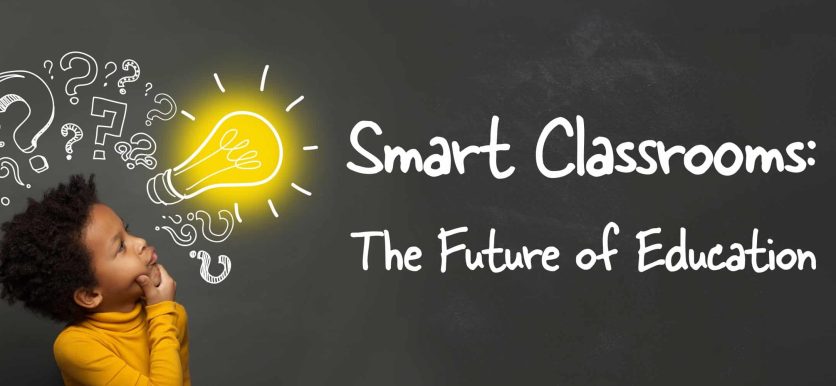Smart Classrooms: The Future of Education
The education industry has always been an early adopter when it comes to the latest technology. The digital age has only accelerated this trend, especially in the wake of the pandemic, when most classrooms had no choice but to transition into a virtual format. Now that smart technology is so commonplace in education, the concept of the “smart classroom” is beginning to emerge. Here’s a closer look at how smart technology is revolutionizing the world of education.
The Backbone: Fiber Internet
Fiber internet provides unparalleled speed and reliability compared to traditional broadband connections. With gigabit speeds, students and educators can seamlessly stream high-definition video, participate in real-time video conferences, and access cloud-based educational resources – inside or outside the classroom.
High-speed internet also facilitates real-time collaboration among students and teachers. Platforms like Google Classroom, Microsoft Teams, and Zoom enable virtual classrooms, allowing students to work together on projects, attend lectures, and participate in discussions as if they were in the same room. Furthermore, students can access digital libraries, virtual laboratories, and interactive learning platforms from anywhere in the world. This accessibility provides opportunities for students in remote areas to benefit from high-quality educational materials.
The Integration: Smart Technology
So much new technology is being used in the classroom that simply wasn’t around when many of us were in school. For example, interactive whiteboards (a.k.a. smartboards) replace traditional chalkboards and whiteboards, providing an interactive surface where teachers can display multimedia content, annotate directly on the screen, and engage students with interactive lessons. These boards can even connect to the internet, allowing online resources to be displayed right on the screen.
In some schools, each student gets access to a laptop or tablet, which is a great tool for providing students with access to their educational materials at any time. However, smart classrooms can take it a step further by utilizing adaptive learning software. Software such as EdApp or Adaptemy tailors educational content to the individual needs of each student. These programs use data analytics and machine learning algorithms to identify students’ strengths and weaknesses, providing personalized learning paths and real-time feedback to help them succeed.
Augmented Reality (AR) and Virtual Reality (VR) technologies are also making an appearance in the educational landscape, especially in higher education. These technologies make learning more accessible by providing immersive learning experiences that would typically only be available through on-site experience. AR and VR allow students to gain hands-on experience and interact with simulations that bring complex concepts to life.
In conclusion, the convergence of fiber internet and smart technology is transforming the world of education by creating smart classrooms that enhance learning experiences and outcomes. High-speed internet and smart technology work hand-in-hand to break down barriers that made resources inaccessible for some, while also fostering an environment where students and educators can collaborate and connect. The smart classroom is no longer just a vision of the future – it is rapidly becoming the new standard in education.
